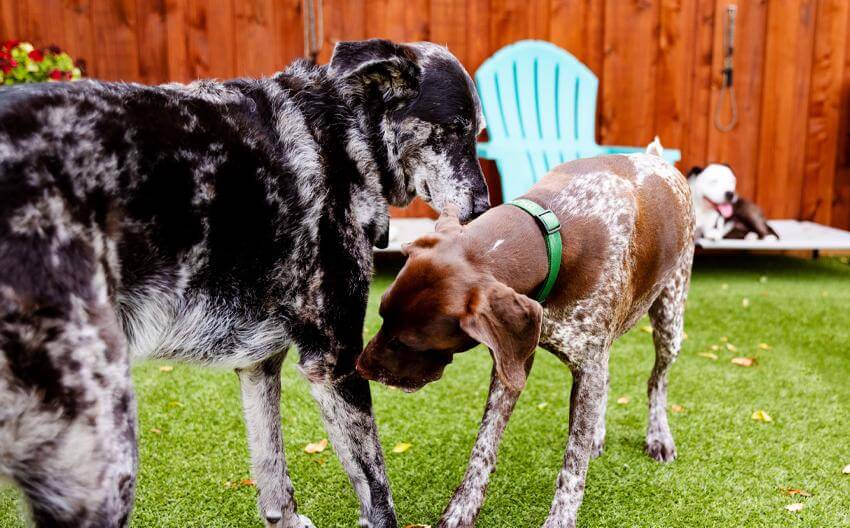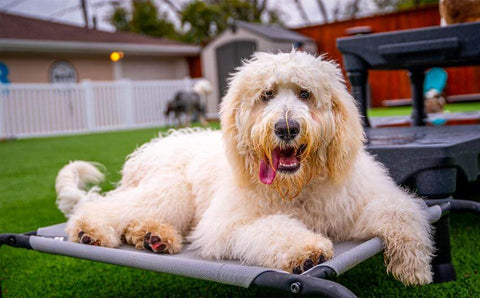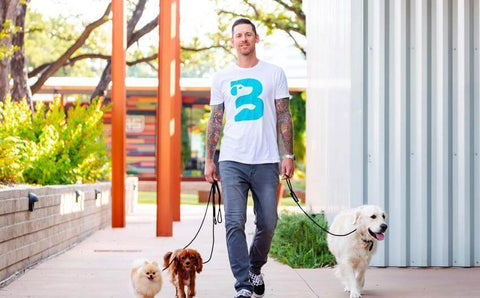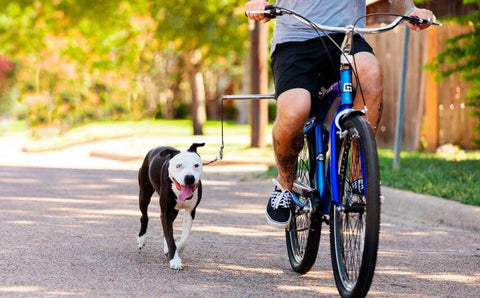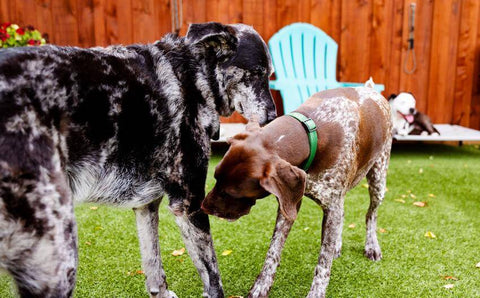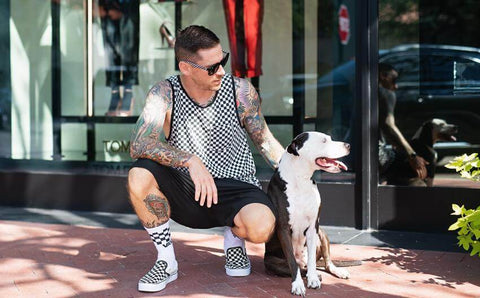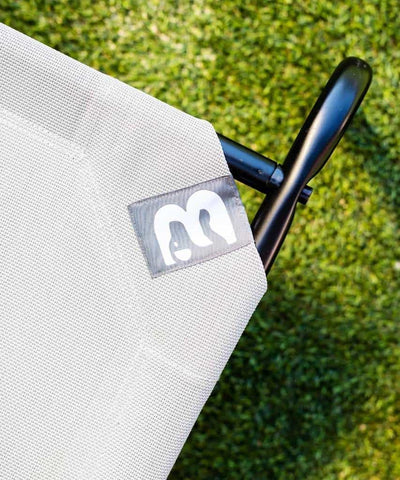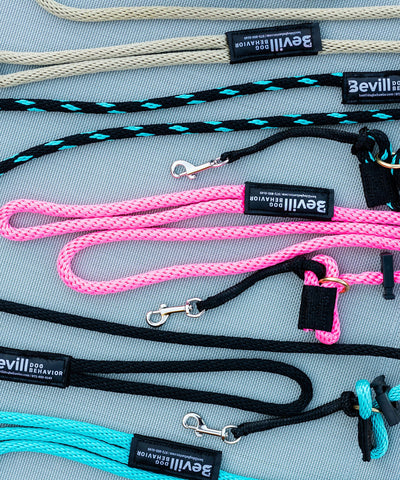Today we’re taking a look at dog communication methods.
It’s common sense that dogs don’t speak human, but that doesn’t keep 99% of dog owners from trying anyway. You could read your dog the entire dictionary front to back and they would understand exactly zero words. You could tell your dog “no, no, we don’t jump on guests” a thousand times, and they will still jump on your guests.
Being a dog in a human world is confusing. Add to that a human who constantly speaks gibberish...well, you get the point. People think talking to their dogs is useful and that’s just not true. What is useful-is understanding how our dogs communicate with each other. We believe in using communication methods that dogs understand instinctively, methods that have been reinforced by their mom and siblings as puppies-rather than imposing our preferred form of communication (spoken language) on them.
Remember, dogs are born with their ears and eyes closed! Their nose is their go-to sense for understanding the environment. So speaking to them in a language they don’t understand overloads a sense (hearing) that isn’t super crucial to them for communication.
So, how do dogs communicate?
Dogs communicate the same way most animals do, using what we call the Universal Language of Animals. That language is:
- Energy (how you feel - emotions x what you want to accomplish - intention)
- Body language & Eye Contact
- Physical touch
- Space
- Sound
You’ll notice english isn’t anywhere on the list. A momma dog never politely asks her puppies (in spoken language) to stop nursing so hard. Let’s break this down one by one, so you can apply these communication techniques to your own human/dog relationship. Remember you are the calm, confident leader your dog looks to for guidance.
Energy - When we speak of energy we’re talking about emotions and intention. We want our emotional state to be calm and certain. If your emotional state is scared, unsure, nervous, or frustrated, your energy will communicate that to your dog. So calm and certain (or confident). The other half of the equation is intention. What are we trying to accomplish or communicate? Let’s say your intention is to create calm in your dog. If you keep your focus there, while keeping your own emotional state calm and confident, your energy will communicate to your dog that it’s time to be calm.
Body Language and Eye Contact - Dogs use this all the time. Our body language should change based on the specific dog, how they’re feeling, what they’re telling us, and what we’re trying to accomplish - but a good rule of thumb is upright, clear, and certain. We want to project confidence and decisiveness (not confrontation or unease). This means a tall, upright posture. Eye contact should match our energy and our body language. It’s either direct/strong, neutral, or soft/inviting, depending on what our intentions are at that moment. We don’t want to stare our dogs down, we simply want our eye contact to say what we want it to say. When in doubt, focus on your body language.
Physical Touch - dogs would use a nose punch/nudge, a bite to the neck or muzzle, pawing, or using their full body to communicate. We’re not going to ask you to bite your dog or nose punch them, instead we’re going to use our hands/body and particularly our leash. This allows us to say the same things to our dogs that pawing them or nudging them would.
Space - Dogs use space or distance to claim, warn, invite, correct, communicate social position, show submission, show dominance, share trust, etc. We use it the same way. As the calm, confident leader it’s our job to control (or provide guidelines around how our dogs can use) space.
Sound - Dogs use a growl, bark, whine, howl, grunt, etc. for many different reasons. We use soothing sounds when we’re massaging or rewarding calm. We use high-pitched, exciting sounds when we’re encouraging or praising for a job well-done. And we use “uh-uh,” “Shhh,” a snap of the fingers, (or whatever sound you want to use that communicates you “mean it”) when we are disagreeing with a behavior or state-of-mind.
Notice that sound is last on our list - yet it’s the first way most people try to communicate with their dogs or greet new dogs. We want you to look at this list as a top to bottom process. First and foremost, what is your energy saying? What is your body language communicating? If energy and body language don’t match your intention, your dog won’t get the message. Sound is sort of the cherry on top, and we don’t need to use it often if our other communication methods are solid.
<< Previous Article: 23:59:59Next Article: Dogs Want To Work. Let Them! >>

